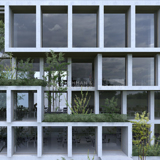According to AP, on Thursday, King Frederik X of Denmark will lay a “foundation stone” within part of a red brick wall that survived the mid-April blaze, commencing a yearslong reconstruction plan. “We will do this as fast as possible to have Boersen ready for the Copenhageners, for the Danes, for the world again,” said Lars Daugaard Jepsen, head of reconstruction at Denmark’s Chamber of Commerce, which owns the building. He used the Danish name for the stock exchange building.
On Friday, there will be an open day event where visitors can come and see what is left of the downtown exchange. Construction started in 1615 and first opened in 1624. It is considered a leading example of Dutch Renaissance style in Denmark.
In the early morning of April 16, a violent fire tore through the building, a major tourist attraction. The blaze toppled its green copper roof and iconic dragon-tail spire. Two days later, a large section of the building’s outer wall collapsed inwards.
As the fire raged, many, including ordinary people, ventured in to rescue artworks and around 90% of the cultural objects were rescued from the fire.
Authorities have yet to reveal the cause of the fire, but it's believed to have started on the building’s roof, which had been wrapped in scaffolding because of ongoing renovation work to be completed for its anniversary in 2024.
Instead of a renovated building, it's now a ruin. But there are detailed records of its design.
“We have a lot of pictures, we have a lot of papers, we have a lot of knowledge about this building,” Daugaard Jepsen told The Associated Press, during a recent site tour. “That’s also why we are very optimistic of rebuilding this place.”
He said they want to use the same materials that were available in the construction 400 years ago.
Before the fire, the chamber of commerce had ordered 80,000 bricks — handmade in Germany and burnt in coal-fired ovens — for renovation work. That order has now increased to 800,000.
The wood used in the 17th century came from a Swedish Baltic Sea island and was already 160 years old when brought to Denmark, Daugaard Jepsen said. “We are looking for about 800 to 1,000 trees on Gotland, because we will use the same materials,” he said.















